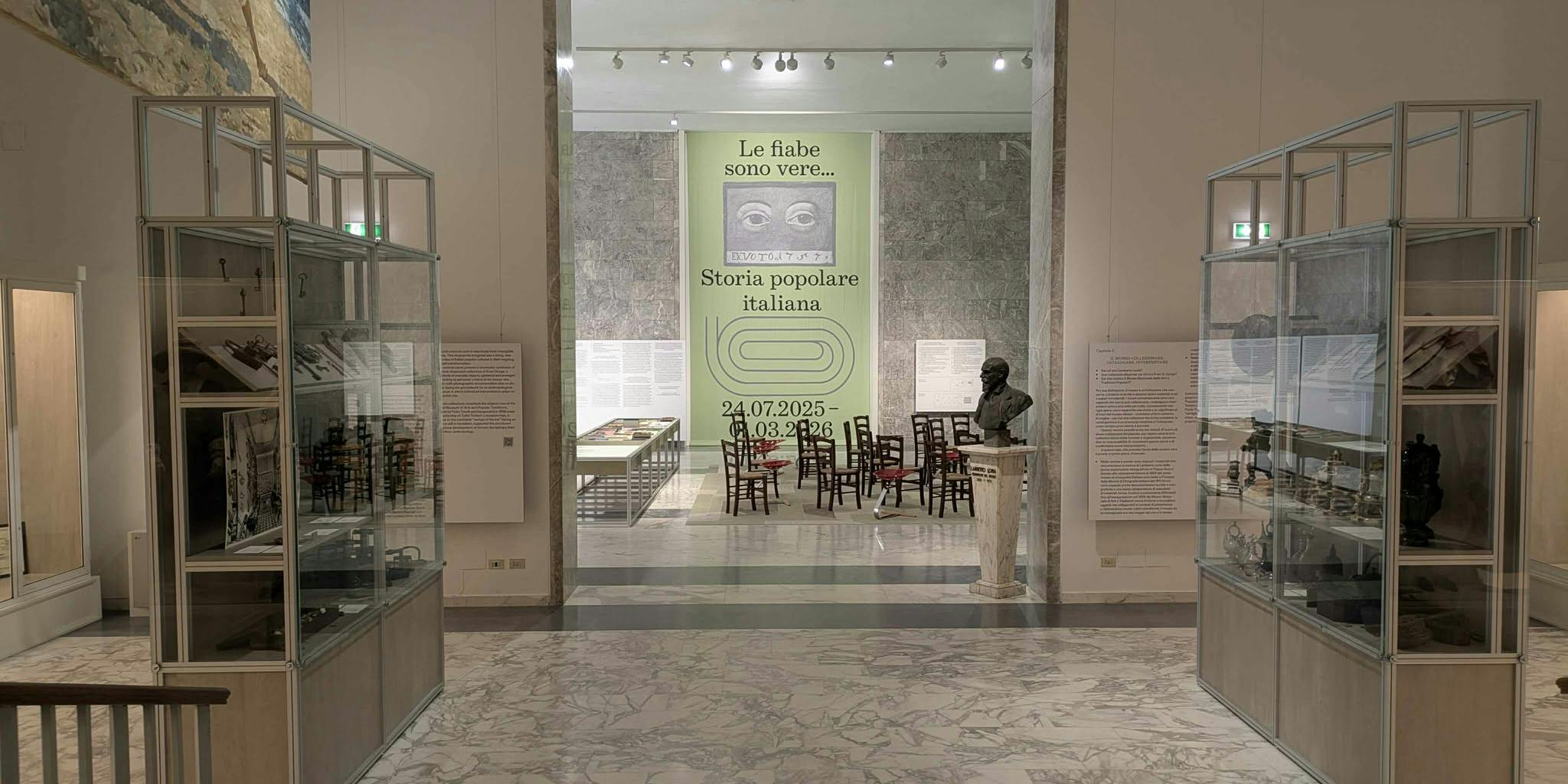
The exhibition “Le fiabe sono vere… Storia popolare italiana”
At the Museum of Civilizations of Rome, an innovative and accessible exhibition journey
It was inaugurated on July 23
Organized by the Direzione generale Musei of the Ministry of Culture and curated by the Direttore generale Musei, Massimo Osanna, and the Director of MUCIV, Andrea Viliani, the exhibition is conceived as a true manifesto of public culture that redefines the museum’s role as a space-time accessible to the multiplicity of contemporary audiences.
Le fiabe sono vere... Storia popolare italiana aims, through its entire range of proposals, to rethink the museum as an inclusive and plural experience, not only as a place of preservation and study but also as a laboratory for meeting and dialogue, transformation, and participation.
The path of over 500 works – including paintings and drawings, costumes and masks, amulets and ex-votos, agricultural tools and means of transport, musical instruments, toys, photographs, prints, and films – takes shape as an adventure highlighting the deep connections between fairy tales, arts and popular traditions, the real history they reflect, adopting the fairy tale as a narrative structure capable not only of telling the exhibition’s story but also of offering a symbolic key to read our past together with our present.
The project draws inspiration from the symbolic structure of fairy tales according to Italo Calvino, who in his preface to the anthology Fiabe italiane (1956) stated that fairy tales are true because – connecting the mythical to the everyday, the individual to the collective, the natural to the cultural, the wild to the domestic – they help us understand the world around us.
The project was developed through a complex system of tools for physical, sensory, cognitive, relational, and symbolic accessibility, designed in collaboration with organizations and referenced associations – including AIPD (Associazione Italiana Persone Down), ANFFAS National (Associazione Nazionale di Persone e Famiglie con disabilità intellettive e disturbi del neurosviluppo), Consulta Regionale per le Tutela dei Diritti della Persona (Lazio), ENS (Ente Nazionale Sordi), FAND (Federazione tra le Associazioni Nazionale della Persone con Disabilità), FISH (Federazione Italiana per il Superamento dell’Handicap), UICI ( Unione Italiana Ciechi e Ipovedenti, sezione Roma). The working group, coordinated by Miriam Mandosi, emphasized the urgency to move beyond the idea of accessibility linked only to abilities or disabilities, to work instead on themes such as well-being, self-fulfillment, rewarding and generative experiences.
All the exhibition’s tools are also available in Italian Sign Language (LIS) and American Sign Language (ASL). Moreover, a tactile path featuring original objects was also created.
Guiding visitors through the exhibition sections is a new fairy tale, specially written for the occasion by narratologist Elena Zagaglia: transcending the idea that the language of fairy tales is reserved for children, the adventures of Elio, the main character, invite everyone to value encounters with the different and the marvelous, transforming the fear of the unknown into an opportunity for awareness and growth. The fairy tale is available in audio format, Easy-to-Read version, AAC, LIS, and ASL and is connected to a path composed of nine works from the permanent collection.
The exhibition, open until March 1
At the link, the project.